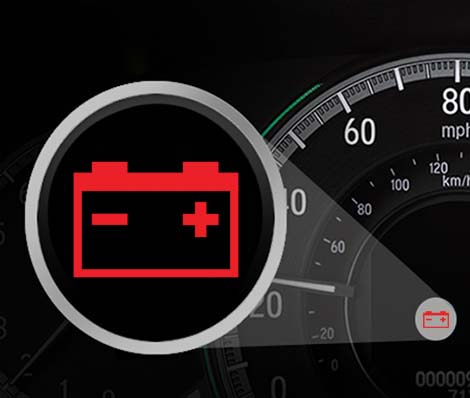

A car needs electricity to start and run the engine, and to power the various accessories (lights, radio, defrost, GPS, etc.).
Starting And Charging Systems
If your car won't start, the battery isn't the only suspect part. The starter, alternator and spark plugs can also be the cause of this failure. The battery, starter, and alternator are key components of the electrical system that start the engine and also provide all the power to your vehicle's electrical accessories.
Are you waiting for a little “squeak squeak” noise under the hood? This is a very good indicator that one of your engine's belts is showing signs of wear or inappropriate tension. You should not let such a problem drag on. Multifunction or “V” belts play a vital role in driving several mechanical parts.
It activates a host of accessories such as the alternator, the power steering pump and the air conditioning compressor. As they are heavily used and in continuous action over time, the rubber of the belt can dry out and make it more vulnerable to deterioration and wear.
Warning Signs:
- Battery warning light is ON.
- Difficult engine starting.
- Unstable engine idling.
- Loose or dirty battery terminals.
- Unpleasant burning smell.
Service Tips:
Most manufacturers recommend checking the battery, starting and charging systems every 12 months or 20 thousand kilometers (12,000 miles).
Schedule A Quick Appointment (450) 681-1414
Battery, visually inspect the battery for signs of damage, corrosion or leaks. Make sure the battery terminals are clean and tight, and that there are no loose or damaged cables.
Drive belt, visually examine belts for signs of cracks, excessive wear, tears, cracking or slipping.
Components and accessories, inspect pulleys, bearings and driven accessories (alternator, power steering pump, air conditioning compressor, etc.).
Battery maintenance, clean terminals, connections and apply protective coatings.
Battery warning light, an electrical system diagnosis is necessary to determine the possible source of the problem.
Battery voltage test, if the voltage is low or abnormal, it may indicate a problem with the vehicle's battery or charging system.
Charging system test (Alternator), if the charging voltage is below the normal range or if it varies significantly, it may indicate a problem with the alternator or charging system.
Drive Belt, replacement of multifunction or “V” drive belt, pulleys and tensioners.
Battery, capacity test, recharge and battery replacement. Resetting and programming the on-board computer.
Charging system, charging system capacity test and alternator replacement. Resetting and programming on-board computer.
Starting systems, test starter electrical voltage and starter replacement. Resetting and programming the on-board computer.
Vehicle road test before delivery, using several simulations and driving maneuvers to test the performance of the engine and transmission at acceleration and at idle to ensure the proper functioning of the systems and that no warning lights anomaly does not light up.
When driving off-road, a vehicle's battery and electrical system are essential for powering electrical systems, including ignition, lighting, and accessories. Here are some tips for taking care of your battery while driving off-road:
Regular Maintenance:
- Make sure the battery is in good working condition before heading off-road. Check its electrolyte level (if applicable) and make sure the terminals are clean and tight.
Shock and vibration protection:
- Off-Road roads can be bumpy and rough, which can damage the battery if not properly secured. Install sturdy battery mounts to minimize vibration and shock.
Protection from the elements:
- Keep the battery protected from the elements as much as possible. If your vehicle has a front or rear bumper, consider installing a battery box to protect it from splashing mud and water.
Charge Monitoring:
- Monitor the battery charge while driving off-road, especially if using power accessories such as winches or additional lights. Avoid discharging the battery flat, as this can shorten its lifespan.
Use A Quality Battery:
- Opt for a high quality battery suitable for Off-Road use. Batteries designed for extreme conditions can better withstand the vibrations and shocks encountered when driving Off-Road.
When it comes to a vehicle's battery and electrical system, service advice is crucial to ensuring reliable operation of the electrical system. Here are some important recommendations:
Regular inspection:
- Regularly check the condition of the battery, including its electrolyte level (for traditional batteries) and the condition of the terminals and connections.
Terminal Cleaning:
- Clean the battery terminals and connections to remove corrosion and ensure a proper electrical connection.
Seasonal Maintenance:
- In winter, make sure the battery has enough charge to start in cold weather. In summer, avoid letting the battery overheat by protecting it from extreme temperatures.
Use Quality Parts:
- When replacing electrical system components, use quality parts that meet the manufacturer's specifications to ensure optimal compatibility and performance.
Batteries and the electrical circuit are essential components of any vehicle. Here are some useful tips and information about them:
Visual Inspection:
- Checking for signs of corrosion around terminals and cables. Cleaning and maintenance of terminals and cables.
Diagnosis & Repair:
- Battery capacity test to assess battery health and performance.
- Battery replacement, resetting and programming the on-board computer.
Visual inspection:
- All components of the charging system, including the alternator, drive belt and electrical connections. Look for signs of damage, corrosion or loosening.
- Drive Belt Inspection: Checking for signs of excessive wear, cracks or tears.
Diagnosis & Repair:
- Charging system low voltage may indicate a problem with the alternator.
- Replacing the alternator and drive belt, resetting and programming the on-board computer.
Visual inspection:
- Inspect wire harnesses, connectors and terminals for signs of damage such as fraying, corrosion or burnt spots. Check for loose connections or disconnected wires.
Diagnosis & Repair:
- Bowling fuse, relay or short circuit.
- Repairing damaged wires or connections, overloads or other electrical problems.
- Once repairs are completed, our technicians will perform a road test and additional check to ensure the problem has been resolved and that no malfunction warning lights come ON.